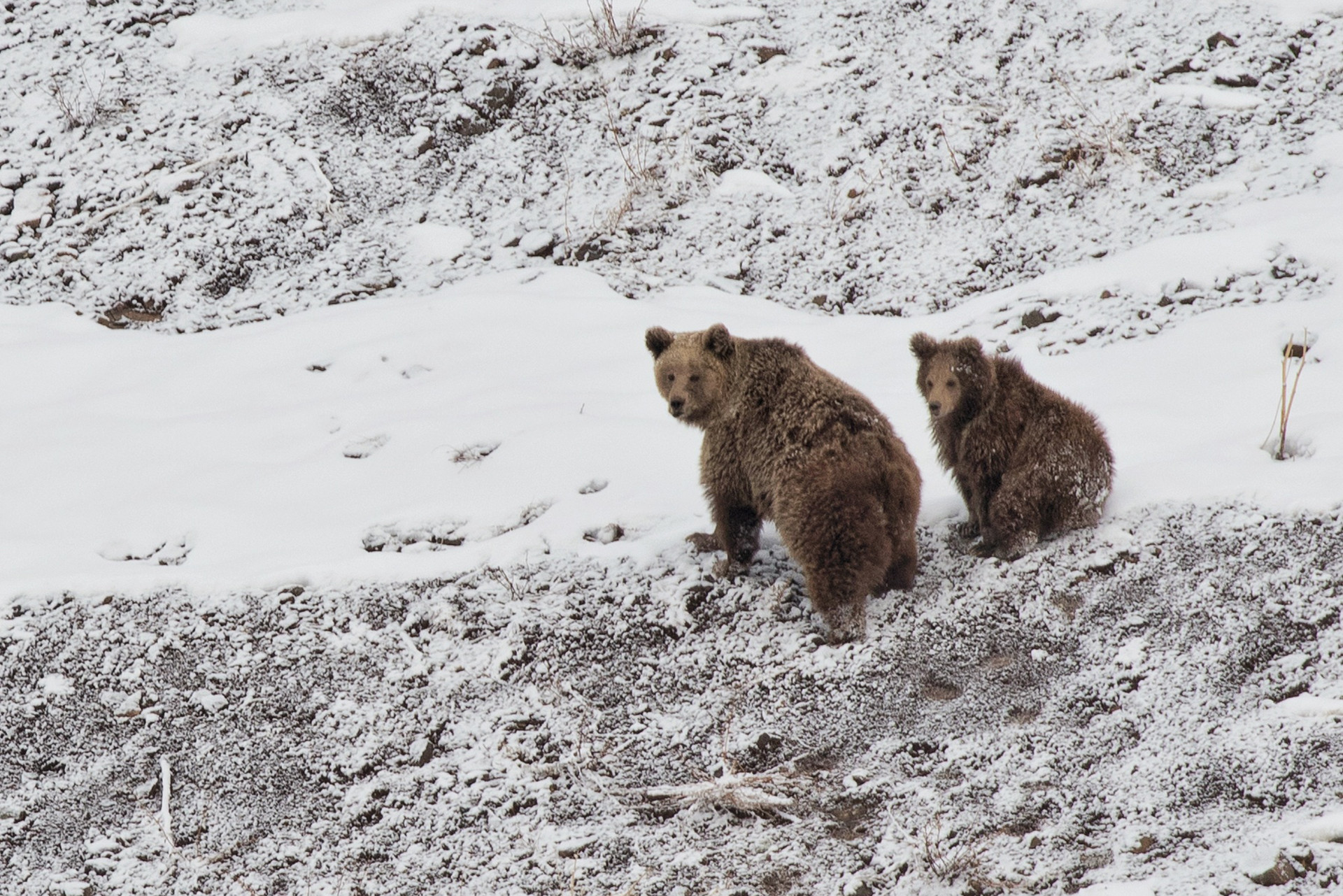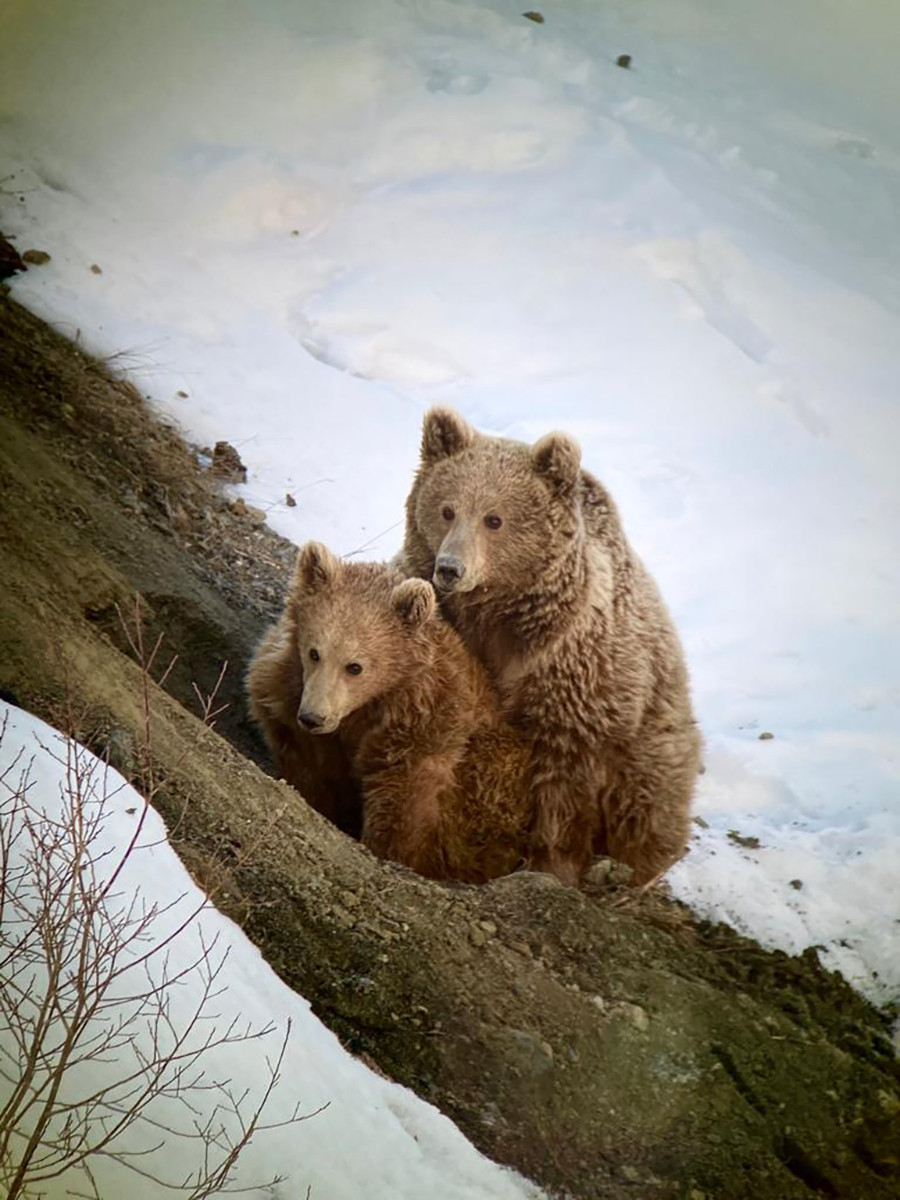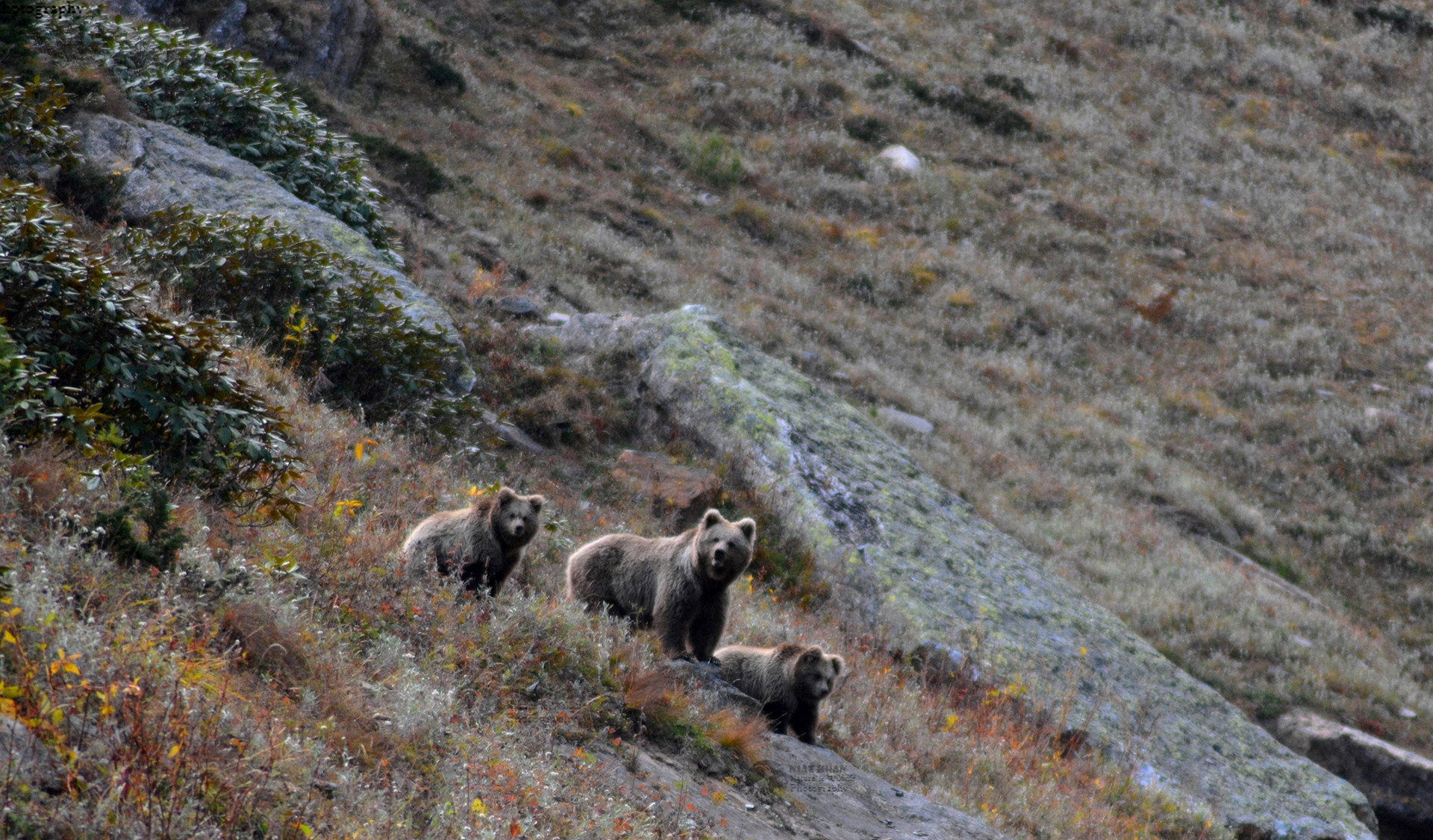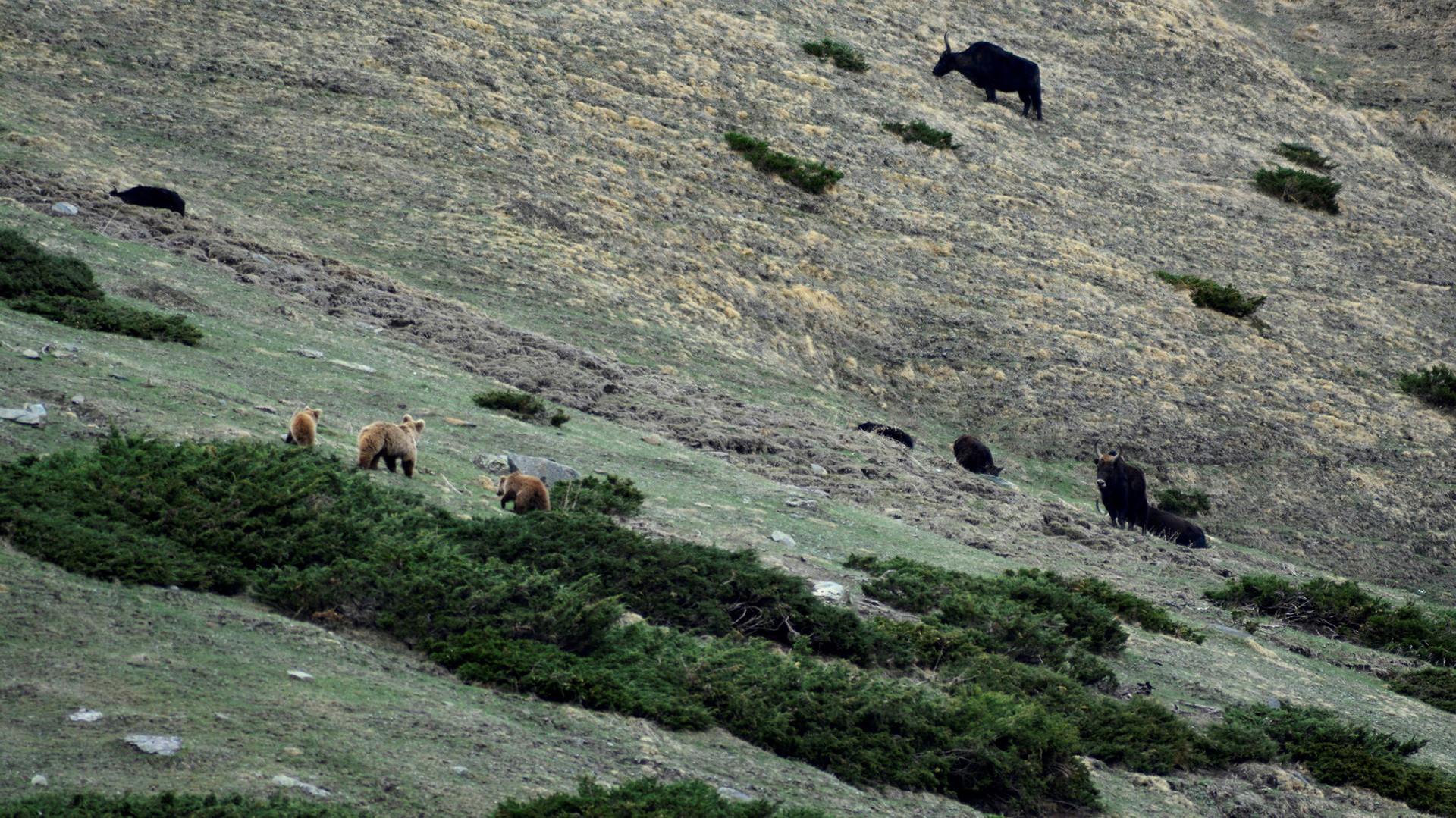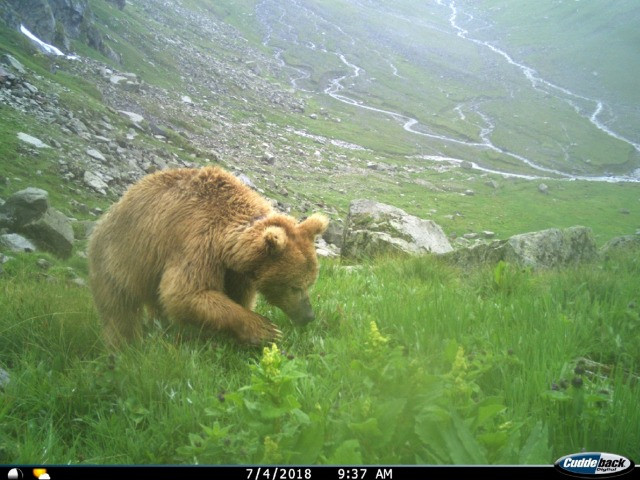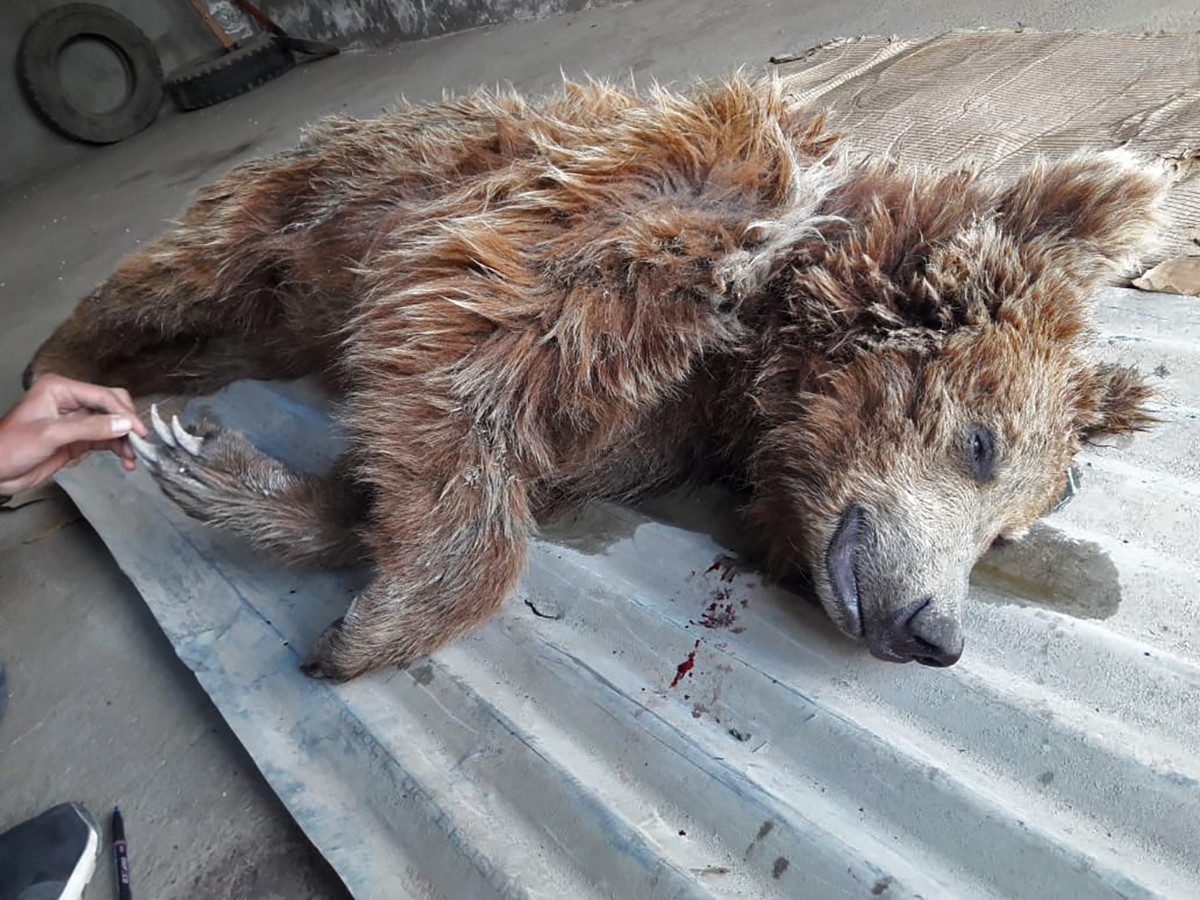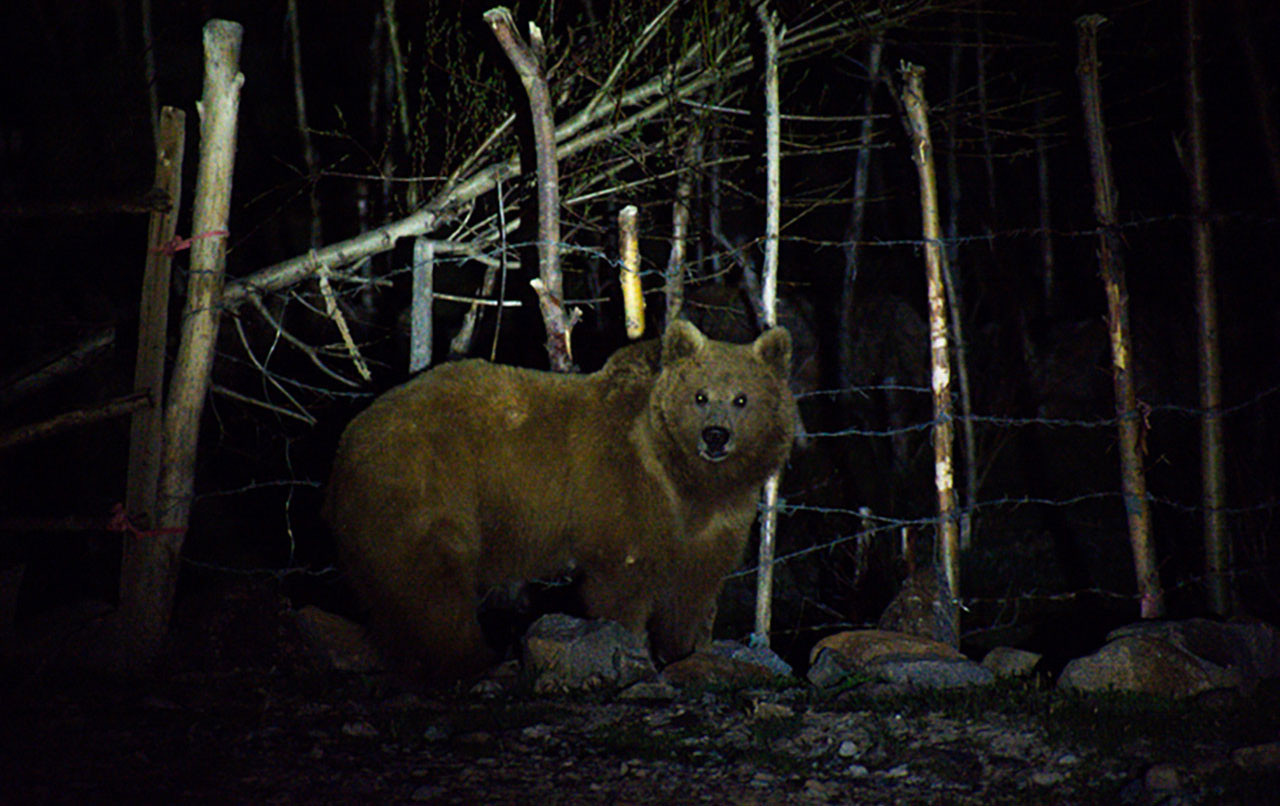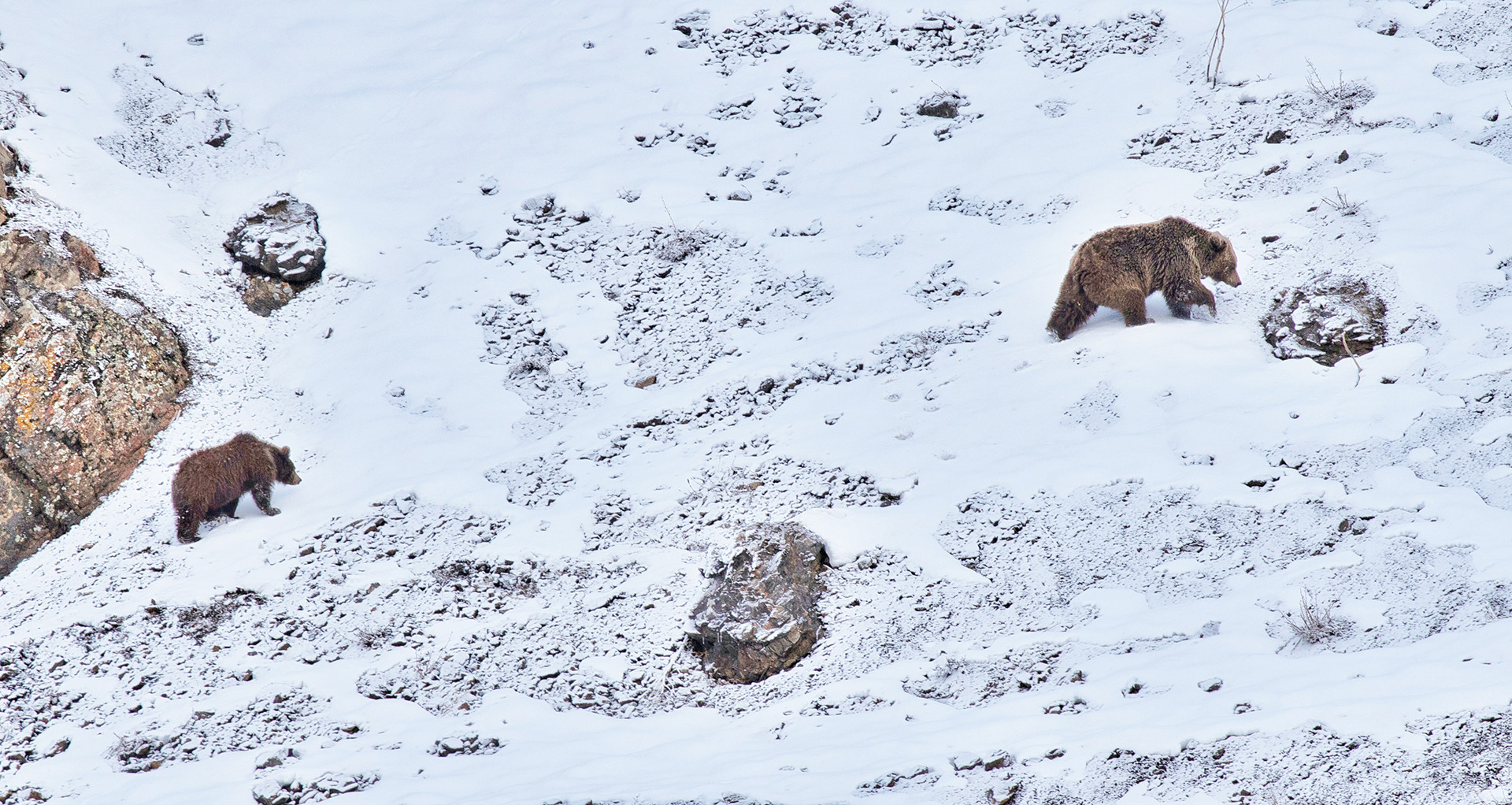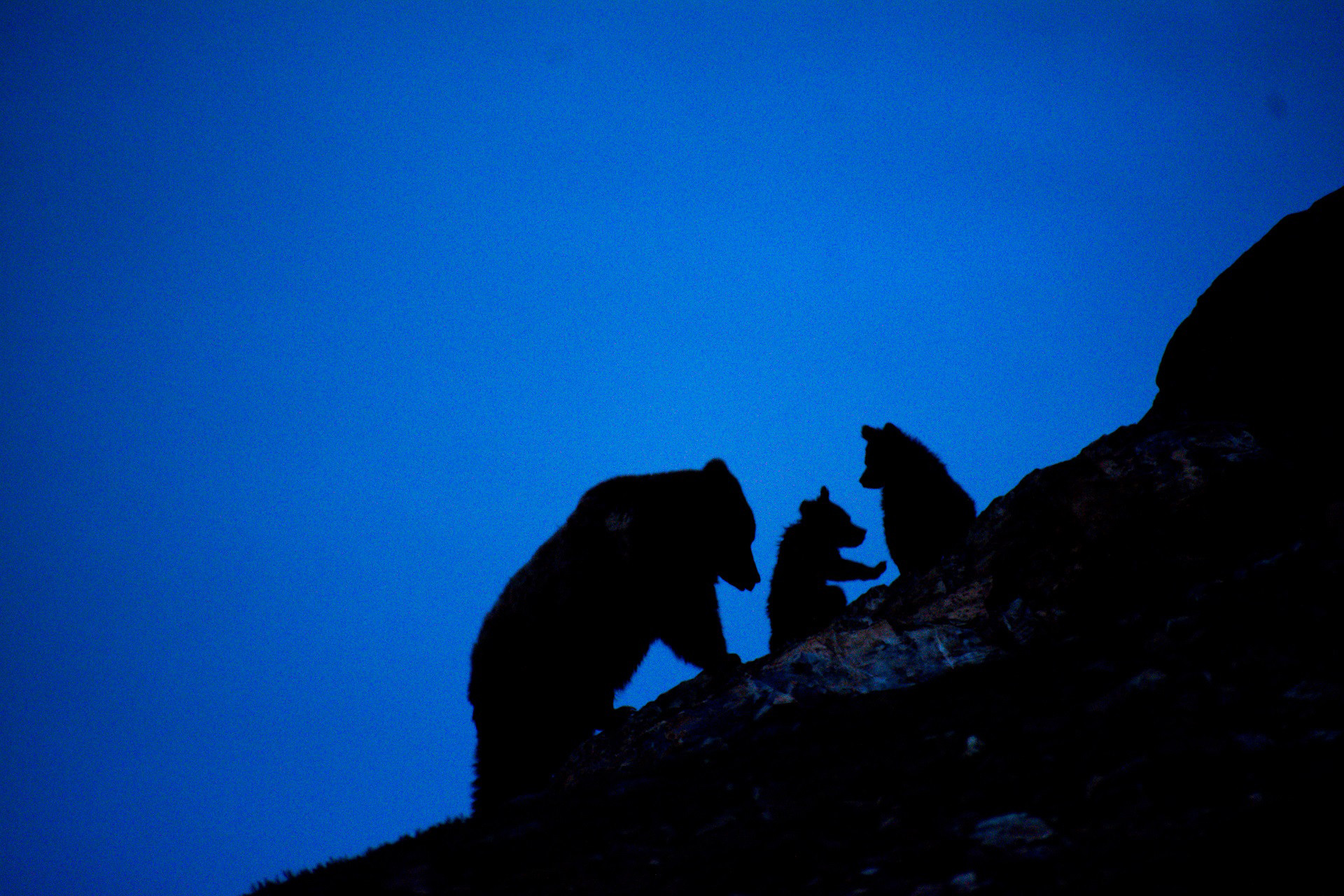The titanic jagged mountains, the turquoise blue rivers that snake through its valleys, and the alpine forests that pop against the snow-capped peaks—it is impossible not to be brimming with compassion and affection for the natural world whilst in the Himalayas.
Hailing from the small town of Kargil in Ladakh, my aspirations to become a biologist took root during my time at the GGM Science College, Jammu. My batchmates and I were on the adjacent street to the Kargil District Forest Office when we saw some forest officials hurry into the building carrying a caged Snow Leopard. Initially, we were wonderstruck seeing such a bewitchingly beautiful animal up close. But the spell broke soon, and we were pulled back to reality as the officers scrambled to save the injured animal, which eventually passed on.
Navigating my further education towards wildlife studies, I completed my postgraduation in Zoology, specialising in animal physiology. The work was largely lab-based, but what I really wanted for myself was to get out in the field and gain firsthand experience. That is when I started my internship at the Wildlife Institute of India (WII), Dehradun, where I was involved in the National Mission on Himalayan Studies (NMHS) project, headed by scientist Dr S. Sathyakumar.
A part of the study area fell in Ladakh, and I remember thinking how it would be great for me to start from a place of familiarity. My work in the Human-Wildlife Conflict (HWC) component of the NMHS project took me to Kugti Wildlife Sanctuary and Tundah Wildlife Sanctuary in the Chamba district of Himachal Pradesh, where scientist Dr B.C. Rathore (Rathore, 2008) pursued his pioneering study in understanding the ecology of the Himalayan Brown Bear.
A Beary Welcome
The Greater Himalayas was a new landscape for me. I had my first Himalayan Brown Bear sighting in the Baggi pasture of Kugti Wildlife Sanctuary. It was on September 23, 2017, when my field assistant Jarnail Sharma, intern Pranav Negi and I were out exploring the valley. We woke up at around 5:30 am and were scanning the area for wild animals when Pranav shouted “Bear!”, pointing towards the other side of the river. It was a mother with a cub, and that moment is seared into my memory.
Out of eight species of bears worldwide, only four of them are found in India. The types of bears in India are the Himalayan Brown Bear (Ursus arctos isabellinus), Asiatic Black Bear (Ursus thibetanus), Malayan Sun Bear (Helarctos malayanus malayanus) and Sloth Bear (Melursus ursinus). Brown bears are found in four major continents (North America, South America, Europe, Asia), and in Asia, they are distributed across Turkey, Iran, Afghanistan, Pakistan, India, Nepal, China, Mongolia, Russia and Japan.
A subspecies of the Brown Bear (Ursus arctos), the Himalayan Brown Bear is largely confined to rolling uplands, alpine, subalpine, glacial moraines and barren regions of the Greater Himalayas and some parts of Trans-Himalayas. The potential brown bear distribution range in India is 36,800 sq.km. and surprisingly, only 10 per cent of the area is protected. Of this, 28,000 sq.km. is in the north-western and upper parts of the western Himalayan region and the other 8,800 sq.km. is in the Trans-Himalayan region of Ladakh.
Indian brown bears are largely found in Jammu and Kashmir, Ladakh, Himachal Pradesh, Uttarakhand and some parts of Sikkim. They are predominantly found in the Kargil region of Ladakh (Sathyakumar, 2006), where their distribution is fragmentary, spread across Drass, Suru valley, Shargole, and Zanskar (Sathyakumar & Qureshi, 2003). The status of brown bears throughout the world varies from threatened to common; thus, they are categorised as Least Concern (LR) in the 2017 IUCN Red List and placed in Appendix I of the Convention on International Trade of Endangered Species (CITES). They are provided with the highest level of protection under the Wildlife Protection Act 1972 (India).
Brown bears are large with thick fur which is often reddish-brown to sandy in colour. Males are larger than females and an adult male can weigh about 400kg. The average lifespan of bears is 25 years in the wild but they can live longer in captivity. Bears have an excellent sense of smell and can run at a speed of 64 km/hr and are excellent climbers. Solitary animals, they are only seen together during courtship or when mothers rear their cubs.
By the end of my year-long study, I had observed a whopping 21 brown bears in the 405 sq.km. of Kugti Wildlife Sanctuary, where I learned about an interesting habitat-use pattern of theirs. Just after hibernation, bears come out of their dens and feast on early seral-stage plants and the busy insects of the meadows. However, as soon as shepherds, or Gaddi as they are locally called, arrive to graze their livestock, the bears move to foraging grounds in higher altitudes. And as soon as the shepherds leave these protected pastures, the bears return.
In April 2018, my field assistant Kuljit Sharma, fellow researcher Nitin Bushan and I arrived at the Baggi pasture after a long three-hour trek from Kugti village to witness an extraordinary display of cohabitation. We saw around 7-10 cattle casually grazing when suddenly a bush nearby rustled to unravel a mother brown bear with her two young cubs. It was remarkable to see that bears and cattle were not only sharing scant resources but were co-existing rather peacefully. I was spellbound once again by the harmonious relationship between domesticated and wild animals. If only we were capable of the same.
You may also like to read
Bears Bearing Man Bearing Bears
In Ladakh, approximately 70 per cent of people belong to the agro-pastoral sector. Wild animals in Ladakh don’t cause much agricultural loss but are the leading cause of livestock depredation. As a local Ladakhi and a researcher, I understand the trauma of livestock loss and the impact it can have on a family, which can be easily diluted by our natural sense of skewed compassion for the bears. My challenge was to understand the context and pattern of interaction between humans and wild animals and produce viable mitigation measures. In Kargil, livestock depredation due to Snow Leopards is much less than by Himalayan Brown Bears, unlike Leh, where Snow Leopards are the main predator species.
Many bear species of the northern region go into a period of dormancy during winter, called hibernation, during which the animals lose huge amounts of body weight and fat. The frequency of bears raiding livestock and even ration stores increases just before and after hibernation – in a phase called hyperphagia. Post-hibernation, the bears have to quickly make up for this nutritional loss. These omnivorous animals actively seek freshly sprouted plants like Hogweed (Heraculum sp.) and wild rose (Rosa webbiana). They also prey on marmots, pika, livestock, and poultry and in some cases, they may even raid ration/chicken/meat stores and flour mills.
From my studies, I realised that bears not only cause a significant amount of livestock loss but also contribute to property loss such as infrastructure and stored ration damage. Corn and apple are a significant part of a bear’s diet, and in the process of raiding farms and orchards, they cause further infrastructural damages, creating losses that can stack up to lakhs of rupees. Along with this, there is a rising concern among locals that bears might start attacking humans. However, only a few unofficial cases have been observed in Ladakh where brown bears have attacked humans. Sadly, in extreme cases, people eliminate the problem species from the area in an effort to retaliate. As per information from the forest department, all cases of bear kills have happened when unfortunate individuals have ventured into human settlements.
One such incident haunts me to this day. It was May 2019, in the Drass valley, when a sub-adult female brown bear had ventured into a human settlement, and she was mercilessly pelted with stones. While attempting to flee, the bear slipped off the hill and fell into the piercing cold water of the Drass river. The carcass of the bear was found almost 10km downstream by the Kargil wildlife department officials, who had struggled in the frigid river water for hours to retrieve the >100 kg leviathan. A necropsy revealed that the bear’s stomach and gut were loaded with human-based subsidies like rice (70 per cent) and other vegetative items (30 per cent).
A similar incident occurred in Suru valley in 2016 where an adult bear was killed by villagers when it had loitered near their hamlet. These events, although extremely heart-wrenching, often veil the misfortune and suffering of the villagers. People’s plight and perspectives need to be understood as well. It is imperative to dissipate the basic misunderstandings and to implement preventive measures to avoid the conflict between humans and wild animals.
No incidences of a bear attack on coral pens, houses and ration stores have ever been reported within the Kugti and Tundah Wildlife Sanctuaries. However, an isolated incident occurred in June 2018 in Kugti. This encounter was the first of its kind in the area. As was his morning routine, at around 6 am, a shepherd herded his cattle to the upper ridges of the Dhamel pasture, an important grazing land inside Kugti. But to his extreme misfortune, he was attacked by a brown bear.
A follow-up interview with the shepherd revealed that he had absent-mindedly gotten too close to an unsuspecting mother bear, and in an attempt to protect her young cubs, the startled bear had attacked the shepherd. In the scuffle, however, the bear got distracted when her cub tumbled down a nearby slope, which bought the injured shepherd invaluable time to scram for his life. It behoves me to add here that brown bear attacks on humans are rarer than those by sloth and black bears.
The conflict between Himalayan locals and Himalayan Brown Bears may not be resolved completely but we can work on various mitigation measures to reduce the conflict to a great extent such as wild animal deterrents (found quite effective), concertina wire fencing, proper disposal of garbage, use of metallic boxes outside coral pens, and most importantly sensitisation of the locals about the species of concern.
Bear Bile and the Pandemic
Akin to the rest of the world, post-lockdown sightings of wild animals have increased in Kargil as well. Reports of bear sightings have come in from new locations: Lato, Kaksar, Chanigund, Hundarman, Shakar-Chiktan, Goma Kargil and surprisingly from Nubra Valley of Leh. This is probably due to the lack of livestock rearing in most areas, inviting bears to explore new pastures.
The pandemic has also inversely affected the species, with China’s National Health Commissions recommending the use of Tan Re Qing, a medicine that contains bear bile along with other herbs to treat infected patients (Yang et al., 2019; Qiao et al., 2019). Chinese traditional medicine is infamous for its use of substances derived from animals. The use of bile in Chinese medicine is dated from the 8th century; it is scientifically proven to help some liver conditions and other ailments. It is believed that more than 12,000 bears are kept in cages for bile extraction in China, Vietnam, Laos, and Myanmar.
The banning of bile farming in many of these countries has led to strong demand in the black market, and even though international trade of bear bile is prohibited by CITES, trade opportunities are ever prevalent. Over the years, a number of cases of illegal bear bile trade have been observed in the country. In Himachal Pradesh, some locals were arrested for the illegal trade of bear bile from an Asiatic Black Bear. In another case, a Sloth Bear was poached for bile in Madhya Pradesh. In the biggest of all confiscations, in Guwahati, a total of 42 bear gallbladders were seized by the Lakhimpur Forest Division. The Dehradun forest division caught two men with four pods containing bear bile. In Uttarakhand, nine gallbladders were seized in 2016 and 2017 each. It is quite evident that such trade opportunities put bears in India under serious threat.
An old man I once met in Drass told me a folk tale about brown bears. It went something like this. Long ago, when a mother brown bear and her two cubs had to come into the valley, they had to cross the river. To do that, the mother would put a stone on one cub to make sure it stays in one place, hold the other cub and cross the river. After crossing, she would put a stone on that cub and go back to bring the other cub. Unfortunately, the cubs on both sides of the river would die from the weight of the stone. Frustrated, the bear would then storm back to the mountains. But that wouldn't happen now, because the bears would simply use man-made bridges! His narration was in response to our discussion about the increased number of bear sightings and incidences of human-bear conflict in the region.
The Himalayan Brown Bear is an evergreen presence in the folklore of Ladakh, and today, they are very much a part of normal life here. How the narrative shapes henceforth, depends on the concerted efforts of all parties included.
Acknowledgements
I am thankful to my supervisor, Dr Bivash Pandav, for believing in me and guiding my research on the Himalayan Brown Bear. I am equally grateful to Dr G. S. Rawat (Ex-Dean, WII) and Dr S. Sathyakumar for supporting and guiding my research in Himachal Pradesh. I thank Sajid Sultan (Chief Wildlife Warden, Wildlife Protection Department, Ladakh) and Pankaj Raina (Wildlife Warden, Leh) for their guidance and encouragement to pursue my research in the region. I thank Raza Ali Abidi (Wildlife Warden, Kargil) for supporting my research in Kargil. Finally, I am grateful to all the field assistants who supported me in the field.
References
- Rathore, B.C., 2008. Ecology of Brown Bear (Ursus arctos) with Special Reference to Assessment of Human-Brown Bear Conflicts in Kugti Wildlife Sanctuary, Himachal Pradesh and Mitigation Strategies, thesis PhD, Saurashtra University.
- Nawaz. M.A., Swenson. J.E., &Zakaria, V., 2008. Pragmatic management increases a flagship species, the Himalayan Brown Bear, in Pakistan’s Deosai National Park. Biol. Conserv. 141, 2230-2241.
- Nawaz, M. A., Martin, J., &Swenson, J. E., 2014. Identifying key habitats to conserve the threatened brown bear in the Himalaya. Biological Conservation, 170, 198–206.
- Mallon, D., 1991. Status and conservation of large mammals in Ladakh. Biol. Conserv., 56, 101-19.
- Nawaz, M. A., A. Valentini, N. K. Khan, C. Miquel, P. Taberlet, & Swenson, J. E. Diet of the brown bear in Himalaya: combining classical and molecular genetic techniques. – Manuscript.
- Qiao, Li-Man & Lou, Dan & Liu, Hong-Wei & Zhang, You-Ting. (2019). Monitoring the ingredient change during the production of Tan Re Qing capsules from Scutellariae Radix by HPLC-MS/MS. Journal of Liquid Chromatography & Related Technologies. 41. 1-13. 10.1080/10826076.2019.1565831.
- Sathyakumar, S., 2006. The status of brown bears in India. Understanding Asian bears to secure their future. Compiled by Japan bear network. Pages 7-11.
- Sathyakumar, S. & Qureshi, Q., 2003. Brown bear – Human Conflicts in Zanskar and Suru Valleys, Ladakh – A Report. Wildlife Institute of India, Dehradun, 21pp.
- Yang Y, Islam MS, Wang J, Li Y, Chen X. Traditional Chinese Medicine in the Treatment of Patients Infected with 2019-New Coronavirus (SARS-CoV-2): A Review and Perspective. Int J Biol Sci 2020; 16(10):1708-1717.doi:10.7150/ijbs.45538.
- Yuen, K. S., Ye, Z. W., Fung, S. Y., Chan, C. P., & Jin, D. Y. (2020). SARS-CoV-2 and COVID-19: The most important research questions. Cell & bioscience, 10, 40. https://doi.org/10.1186/s13578-020-00404-4

